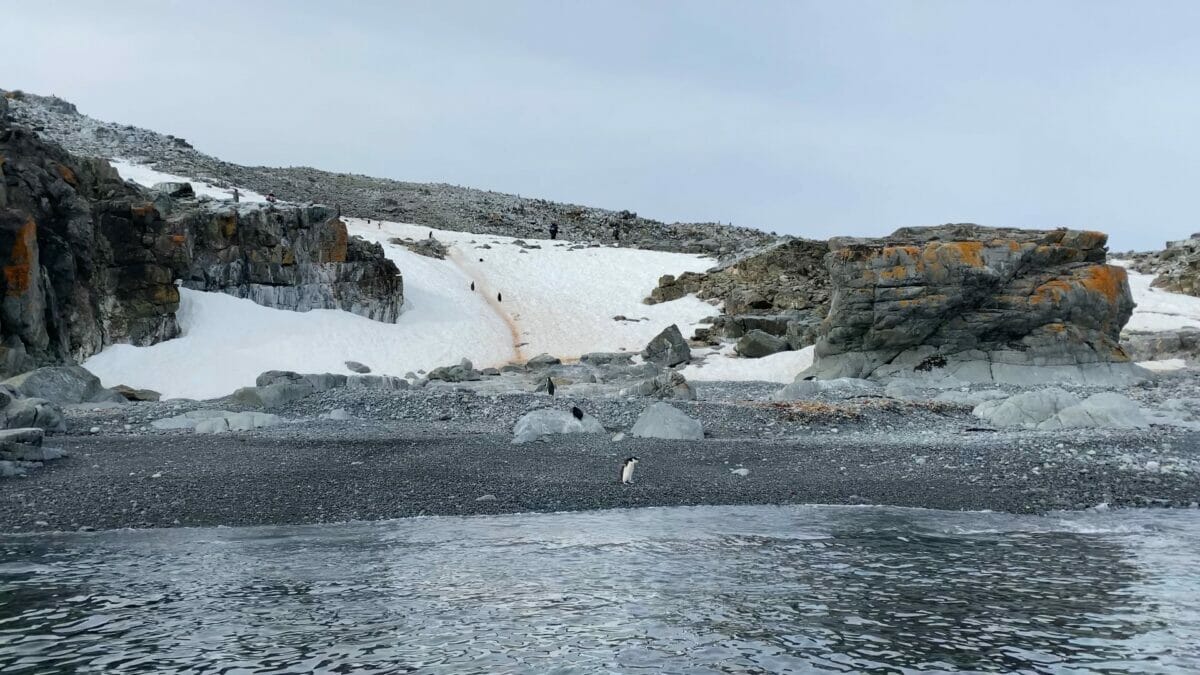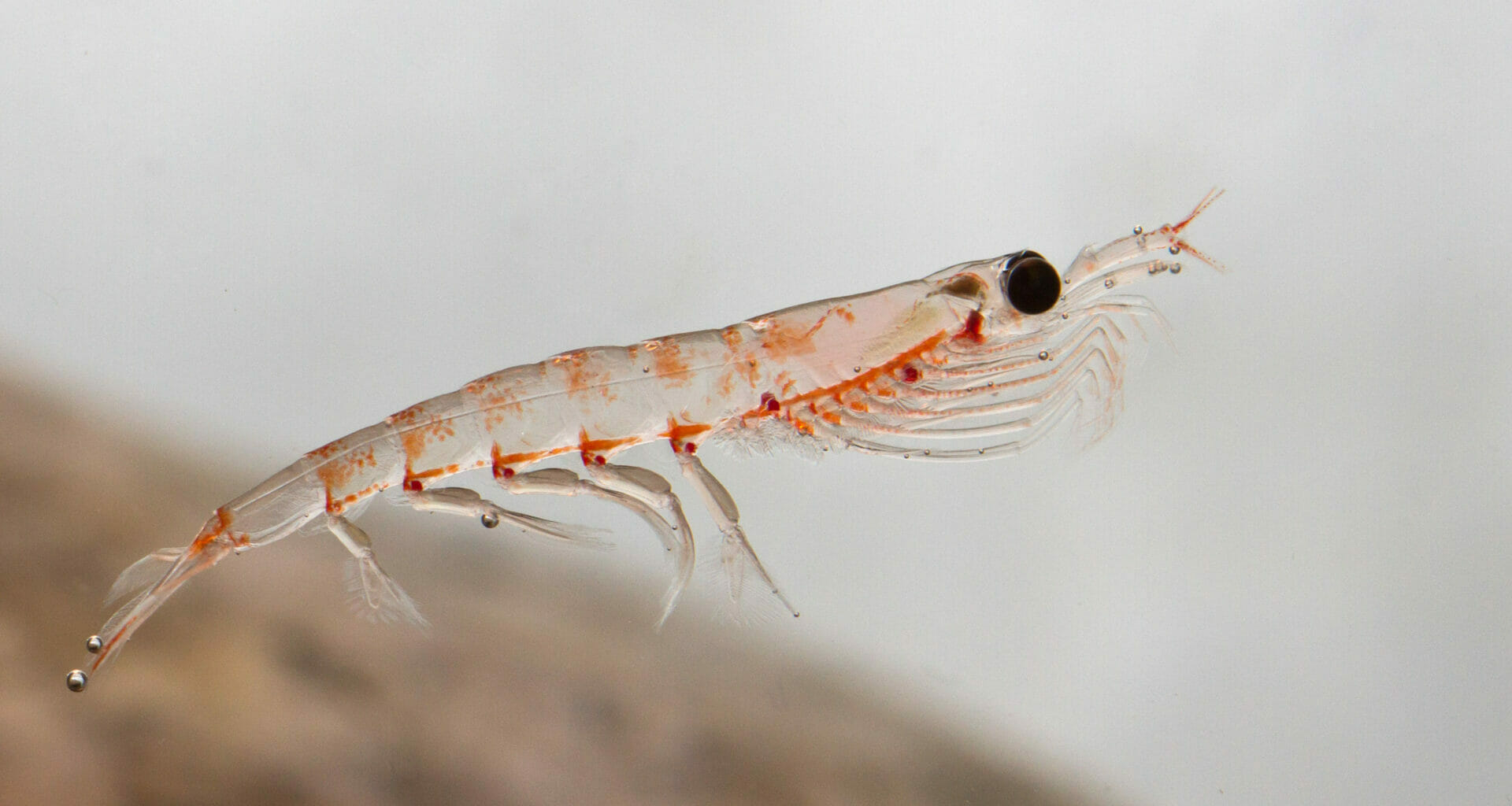China and Russia are expected to block plans for protecting the seas around the Antarctic from over-fishing, sources have told The Ferret.
The two countries are likely to veto proposals from scientists that would curb fishing for krill — a small shrimp-like crustacean at the bottom of the food chain on which Antarctic wildlife such as penguins and whales depend.

A summit involving 37 countries is currently discussing the future of the marine environment around the South Pole. The Commission for the Conservation of Antarctic Marine Living Resources (CCAMLR) is meeting in Hobart, Australia from 24 October to 4 November.
Insiders say that China and Russia will maintain their opposition to the establishment of marine protected areas designed to safeguard the diversity of underwater life and counter the impacts of climate change in the Southern Ocean.
Both countries are said to be keen to fish for more krill (Euphausia superba), which is increasingly being used to feed farmed fish in Scotland and around the world.
CCAMLR is an organ of the Antarctic Treaty, an international convention signed in 1959 to protect the continent. It is responsible for looking after marine resources in the Southern Ocean, and is composed of 27 member countries and 10 acceding states.
Scientists involved with CCAMLR are not expecting China and Russia to start backing marine protection. The two countries are “biased against protected areas,” says Marino Vacchi, a senior researcher at the National Research Council of Italy and a member of CCAMLR’s scientific committee.
“From a scientific point of view, we are in a situation of best available science that supports the proposals to establish new marine protected areas,” he argues.
Vacchi highlights scientific studies that support three proposals for new marine protected areas. They are designed to protect the ecosystems in the Weddell Sea, in East Antarctica and in the Antarctic Peninsula from the effects of rising temperatures, acidification and industrial fishing.
Protected areas in the Southern Ocean

The Southern Ocean surrounds Antarctica and accounts for about 10 per cent of all the oceans on the planet. It is unique for its biodiversity, including fish, whales, mammals, seabirds and invertebrates.
Its microorganisms also play a fundamental role in the planet’s ability to capture and store carbon from the atmosphere. In recent decades, however, the Southern Ocean has also been a hotspot for climate change.
“A lot is happening in Antarctica”, says César Cárdenas, a researcher at the Chilean Antarctic Institute and another member of CCAMLR’s scientific committee.
“There is a lot going on in terms of changes, in terms of water temperatures, air temperatures. We have seen an increase in the last 15, 16 years, changes in the ice coverage, increases in rain, so there’s a lot of physical changes that are affecting the marine ecosystem.”
Best available science supports the proposals to establish new marine protected areas.
Marino Vacchi, National Research Council of Italy
CCAMLR member countries have been working on the creation of a network of marine protected areas since the early 2000s. The first was established in 2009 on the southern shelf of the South Orkney Islands.
In 2016 the Ross Sea became the world’s biggest marine protected area, covering two million square kilometers.
But then the political balance changed and three other proposals for protected areas floundered. The European Union (EU) promoted the Weddell Sea and the east coast of Antarctica, while Chile and Argentina proposed the area surrounding the Antarctic Peninsula.
According to the environmental umbrella group, the Antarctic and Southern Ocean Coalition, the protection of these three large areas would safeguard nearly four million square kilometers of Antarctica’s ocean.
“That is roughly the size of the EU and represents one per cent of the global ocean. Together this would secure the largest act of ocean protection in history,” the coalition said.
But to be approved, CCAMLR decisions must win unanimous support from all member countries. In recent years China and Russia have vetoed the establishment of new protected areas.
“Although some other countries may have specific issues with specific things, in general I see that China is not that keen on closing areas, and Russia the same,” says Cárdenas.
Even if Russia is not fishing for krill at this moment, they want to reserve their rights in the future.
César Cárdenas, Chilean Antarctic Institute
His Chilean Antarctic Institute together with Argentina’s Antarctic Institute are the authors of the proposal for the protected area around the Antarctic Peninsula. The seas surrounding this strip of land, however, are also a hotspot for Antarctic krill fishing.
According to Cárdenas, the establishment of a protected area would not mean a total ban on fishing, but some restrictions “There would be no-take areas, but other areas would be open,” he says.
“It is a geopolitical issue, they need to leave those areas open. Even if Russia is not fishing for krill at this moment, they want to reserve their rights in the future.”
Neither the Chinese nor the Russian delegation to CCAMLR responded to requests to comment.
Rodolfo Werner, Antarctic and Southern Ocean Coalition policy analyst, says: “China doesn’t want to have any restriction for fishing or any commercial activity. This is my take.”
He points out that China also blocked proposals to protect penguins at another Antarctic meeting in May and June 2022. It asked for “further research” on the impacts of climate change.
For a fistfull of krill

Antarctic krill feed on organic matter produced by phytoplankton and then are eaten by whales, seals, fish and seabirds. In this way they are vital to the ocean’s carbon capture and storage process.
According to a report published on 20 October by the World Wide Fund for Nature (WWF): “This process was worth the equivalent of sinking 23 megatonnes of carbon annually into the deep ocean, where it could be stored for 100 years.”
“Krill are individually small but collectively mighty,” says Emily Grilly, WWF Antarctic conservation manager. “That certainly applies to their ability to store carbon and help maintain stable climatic conditions that are beneficial for humanity”.
At the same time ten scientists have published a commentary in the journal Science asking CCAMLR to set tighter limits, or even a moratorium, on fishing in the Southern Ocean.
“Given the immense global value of the Southern Ocean, we must urgently implement tools towards more sophisticated spatial management,” said Cassandra Brooks, assistant professor of environmental studies at the University of Colorado Boulder.
But in the last two decades the krill fishery has steadily grown, from 114,000 to 451,000 tonnes between 2000 and 2020.
Norway leads the industry, with the Norwegian company, Aker BioMarine, managing about 65 per cent of the world’s Antarctic krill production. The Norwegian government has supported “progressing work” on marine protected areas, but linked it to allowing fishing.
China is the world’s second largest producer of krill, and it is growing rapidly. In 2010 the Chinese government launched a strategic plan and since 2016 has provided subsidies to develop krill fishing in Antarctica.
According to CCAMLR, a quarter of the 451,000 tonnes of krill caught in 2020 headed for China. The Chinese fleet is now expanding, with two more vessels reportedly under construction.
In the 1970s the Soviet Union was the first to start industrial fishing for Antarctic krill. Russia has not been active in krill fishing since 2010, but in February 2022 Reuters reported that the country “has announced plans to invest 45 billion roubles (£630 million) in the fishery, including building five high-tonnage trawlers”.
Cover image thanks to iStock/pilipenkoD.
This story is part of a series on krill and was developed with the support of journalismfund.eu and Internews’ Earth Journalism Network.















